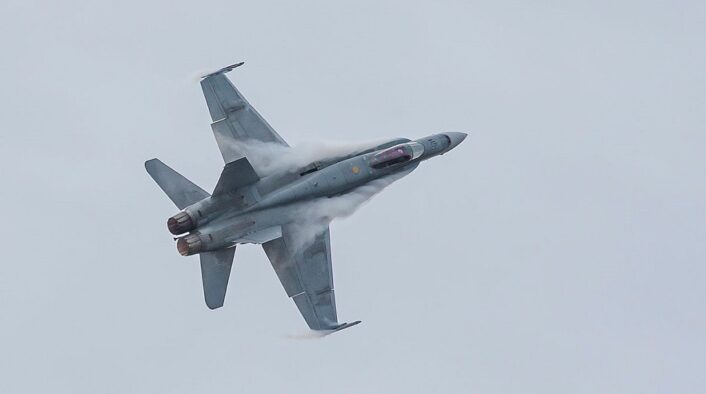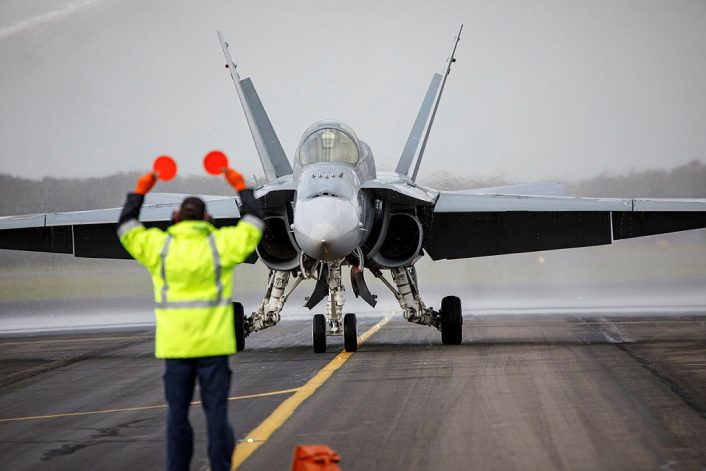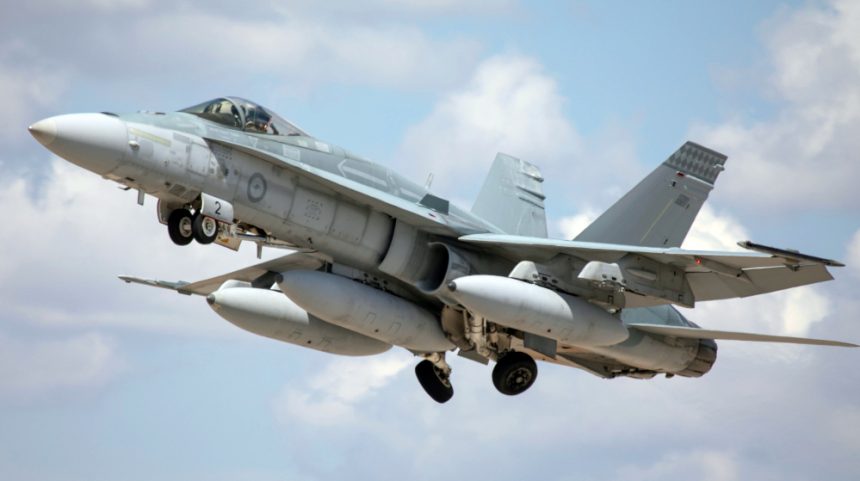Australia formally retired the Hornet after more than 35 years of service and nearly 408,000 total flight hours.
The Royal Australian Air Force officially retired the F/A-18A/B “Classic” Hornet during an official farewell ceremony at RAAF Williamtown on November 29, 2021. The ceremony was attended by the Minister for Defence Peter Dutton, the Chief of the Air Force Air Marshal Mel Hupfeld, aviators and industry partners. The aircraft who took part in the ceremony were assigned to the last squadron still flying the Hornet, the No. 75 Squadron based at RAAF Base Tindal.
Air Marshal Hupfeld himself was an F/A-18A pilot and Fighter Combat Instructor and, during his speech, praised the extraordinary capability the Classic Hornets have provided to Australia’s air power and their contribution while deployed abroad.
“It is quite fitting that in Air Force’s Centenary year we say goodbye to the Classic Hornet, a fighter jet that has been an integral part of Australia’s defence capability for more than three decades,” he said. “As the time of the Classic Hornet draws to a close after nearly 408,000 total flying hours, it’s time to for the transition to the advanced lethality, survivability, and supportability delivered by the F-35A Lightning II.”
Yesterday we farewelled a truly remarkable aircraft, the F/A-18A/B Classic Hornet.
The beating heart of this ‘war chariot’ were the people who maintained, sustained and operated her.
Thank you to all who played a part in the record of achievements of the Classic Hornet. pic.twitter.com/HnsHEfer0A
— Air Marshal Mel Hupfeld (@CAF_Australia) November 29, 2021
Even if the aircraft first arrived in Australia in 1985, the Hornet’s first operational deployment abroad was from November 2001 to May 2002 under Operation Slipper, following the September 11, 2001 terrorist attacks, when the Australian Government agreed to deploy F/A-18As to protect Diego Garcia island, where U.S. forces were staging for their first operations in Afghanistan. In February 2003, Air Marshal Hupfeld personally commanded the contingent of 14 Hornets and personnel from No. 75 Squadron that deployed to Iraq under Operation Falconer, as part of Australia’s contribution to the war on terror.

More recent deployments were mentioned by another experienced F/A-18A pilot, Air Commander Australia Air Vice-Marshal Joe Iervasi. “In 2014 to 2018, F/A-18A/B Hornet squadrons were deployed on Operation Okra as part of the Global Coalition to Defeat Daesh. Once again performing above expectations, on Okra the Classic Hornets flew 1937 missions, accumulating 14,780 flying hours, and delivering approximately 1,600 munitions,” Air Vice-Marshal Iervasi said.
After nearly 37 years of service and 408,000 fleet flying hours, the chapter of the @AusAirForce F/A-18A/B Classic Hornet is about to draw to a close. There is no better place than ‘Hornet Country’ to bid farewell to the Aussie bug. pic.twitter.com/wMcElsprHD
— Roy Choo (@RXRoy) November 29, 2021
Group Captain Jason Easthope, Chief of Staff of the Air Combat Group, had the honor of flying the last handling display for a RAAF F/A-18 Hornet. “It’s an ageless airplane, the performance is fantastic,” he said. “It was bittersweet for me because I’m passionate about flying and I love flying the Hornet, but it was pretty clear to me today it was coming to an end. I was there, turning and burning, pulling 8G trying to stay conscious and had a tear in my eye. It’s a pretty tough day.”

“That was a spectacular display and it showed to all Australians what incredible service the Hornets have provided to our country,” Minister Dutton said. “While the Classic Hornet will no longer take to our skies, the fighter and attack aircraft will remain in the memories of those who flew and maintained it. The distinct, pencil-like nose and cockpit. The unmistakable roar of its F404 engines and the way it nimbly rolled and banked. Unquestionably, the Hornet has been an exceptional aircraft. Exceptional in its own right, but all the more exceptional because it’s been crewed and cared for by exceptional people.”
The day after the farewell ceremony, the last eight F/A-18s were ferried from RAAF Base Tindal, home of the No. 75 Squadron, to RAAF Base Williamtown, marking the last operational flight. On their way to Williamtown, the aircraft conducted a low-level coastal flight along the Worimi Conservation Lands to Newcastle foreshore and Strezlecki Lookout in a show of thanks to the local community for their continued support.
The Classic Hornet is being replaced by the F-35A Lightning II, with 44 already delivered out of the total order of 72 aircraft. No. 75 Squadron will begin the conversion progress in 2022, joining No. 3 and No. 77 Squadrons and the No. 2 OCU (Operational Conversion Unit) which already fly on the fifth gen aircraft. The RAAF declared the Initial Operational Capability of the F-35 last year and is scheduled to reach the Full Operational Capability by 2023.
Even if retired by the RAAF, many of these Hornet will get a second life. As we already reported, 18 flying aircraft and seven non-flying aircraft were sold to Canada as interim gap filler until the introduction of the new fighter aircraft, while up to 46 might head out soon to the United States to join Air USA and provide contracted Red Air support and other services to the U.S. Armed Forces. Around eight aircraft will be prepared for display in Australia, including two at the Fighter World museum in Williamtown.









